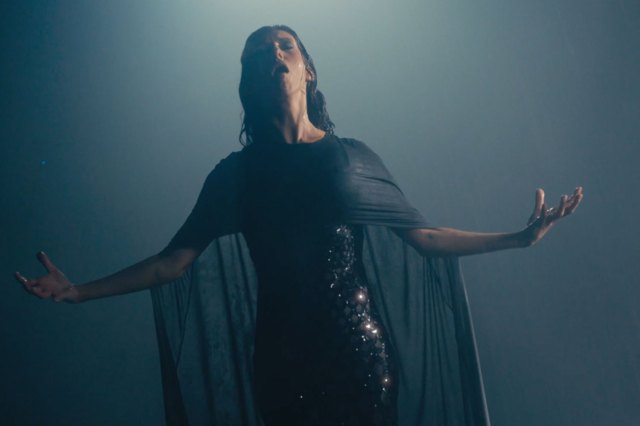Salisbury Plain & Perfect
The Salisbury Playhouse had a matinee press performance yesterday afternoon, and I commend the experiment.
Not only were they showing a play one really wanted to see – Philip Massinger’s unknown The Picture (1629), re-edited and directed by the ever enterprising Philip Wilson, artistic director of the Playhouse – but the occasion also made for a pleasant “away-day” without the bore of an overnight stay or a late-night drive home on the M3.
I made time before curtain up to walk round the Cathedral close, dive into one or two of the city’s fine second-hand bookshops, drop by the public library – where, in the reference section, I sat at a table with a view of the ducks on the river – confirm that Stoby’s fish and chip emporium was still in business in the market square, and that the White Hart hotel had a cracking log fire in the always welcoming foyer.
I’ve always liked going to Salisbury, though I’ve never managed to ascertain which house exactly the late Edward Heath, the former Prime Minister, occupied in the close.
Heath left his house as a museum to the nation, though it’s not a museum that is very near the top of my own “must visit” list. I was more intrigued to see if there was any memento in the magnificent parish church of St Thomas and St Edmund in honour of Massinger, who was christened there.
There wasn’t, as it happens, but Wilson’s production, despite some under-powered speaking and over-long passages, is a tribute in itself to this wonderful, undervalued writer and locally unlauded hero.
And Massinger’s church is sure worth the detour. It’s a magnificent medieval building, full of interest. Pride of place goes to the famous “Doom” painting over the chancel arch, executed in 1475 and said to be the largest such painting in England: it shows the risen Christ supervising the intake of good souls to heaven on one side and the despatch of less fortunate sinners to hell on the other.
In Massinger’s play, the “picture” of the title is one kept by a soldier in the Hungarian wars of his beloved Sophia; the painting will discolour and acquire blotches if she becomes unfaithful to him.
Wilson’s designer, Colin Falconer, fills the stage with translucent photographic screens, one of which shows the portrait of Olivia Grant‘s stunning, Pre-Raphaelite Sophia each time Simon Harrison, as the Bohemian knight Mathias, opens his wallet. As the play is a tragicomedy, this does not, in fact, become another painting of “doom.”
The Thursday matinee audience was sparse but reasonably rapt, although there was the very worst outbreak of coughing I’ve ever heard in a theatre. The poor old chap responsible was equipped with an audio link (which wheezed and crackled throughout) and therefore couldn’t hear the racket he was making.
The front-of-house manager attended him with a glass of water, and he quietened down in the second act, or he may have just passed away, who knows: by that time I’d removed myself to the other side of the theatre with Georgina Brown of the Mail on Sunday. Her own appointed companion had nipped out to do some shopping in Tesco’s, driven batty by the barking.
I note that the RSC is opening its next show in Stratford-upon-Avon, Roald Dahl’s Matilda, at 5pm in the afternoon, no doubt in consideration of a younger audience.
But I’d like to see this practice of afternoon press shows adopted more fully; in Stratford, a 4pm opening, say, would allow for a leisurely lunch, plenty of time to file notices afterwards – and time still to drive or train home at a civilised hour without the hassle or expense of staying overnight.
And let’s hope the RSC soon get round to more Massinger, Marston and Middleton once they’ve got their new theatres sorted out.
Philip Wilson reveals in a programme note that he tried to get them interested in The Picture a few years ago only to find Greg Doran already committed to Massinger’s The Roman Actor. Maybe he can come up with another suggestion soon. Wilson is the bearer of good news: don’t shoot the Massinger!












